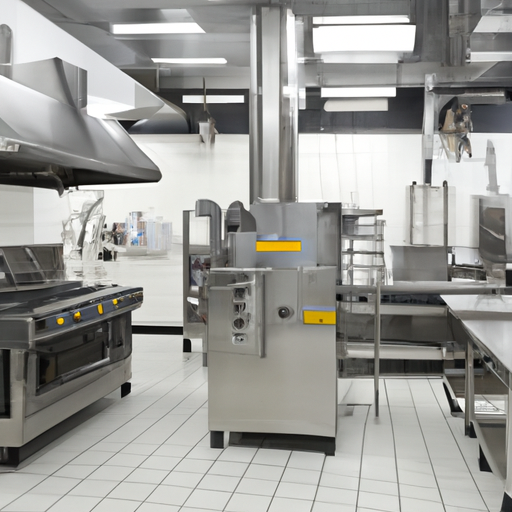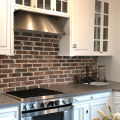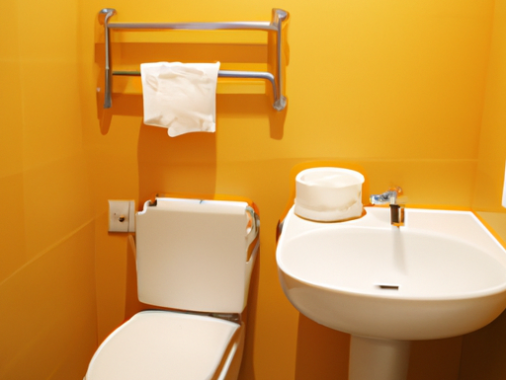-
Table of Contents
- Introduction
- The Benefits of Investing in Industrial Kitchen Equipment
- How to Design an Industrial Kitchen for Maximum Efficiency
- The Pros and Cons of Industrial Kitchen Appliances
- The Latest Trends in Industrial Kitchen Design
- Tips for Maintaining an Industrial Kitchen
- The Benefits of Automation in Industrial Kitchens
- The Best Practices for Cleaning an Industrial Kitchen
- Q&A
- Conclusion
Introduction
Industrial kitchens are an essential part of the foodservice industry. They are designed to provide a safe and efficient environment for the preparation and storage of food. Industrial kitchens are typically found in restaurants, hotels, hospitals, schools, and other large-scale foodservice operations. They are equipped with specialized equipment and tools to help streamline the food preparation process. Industrial kitchens are designed to maximize efficiency and safety, while minimizing the risk of contamination. With the right equipment and design, industrial kitchens can help ensure that food is prepared quickly and safely.
The Benefits of Investing in Industrial Kitchen Equipment
Investing in industrial kitchen equipment is a wise decision for any business that serves food. Industrial kitchen equipment is designed to be more durable and efficient than standard kitchen equipment, making it a great choice for commercial kitchens. Here are some of the benefits of investing in industrial kitchen equipment.
First, industrial kitchen equipment is designed to be more durable than standard kitchen equipment. This means that it can withstand the rigors of a commercial kitchen environment, such as frequent use, high temperatures, and heavy loads. This makes it a great choice for businesses that need to serve large numbers of customers quickly and efficiently.
Second, industrial kitchen equipment is designed to be more efficient than standard kitchen equipment. This means that it can help businesses save time and money by reducing the amount of energy and labor needed to prepare food. This can help businesses reduce their overhead costs and increase their profits.
Third, industrial kitchen equipment is designed to be more hygienic than standard kitchen equipment. This means that it can help businesses maintain a clean and safe environment for their customers. This can help businesses reduce the risk of food-borne illnesses and other health hazards.
Finally, industrial kitchen equipment is designed to be more cost-effective than standard kitchen equipment. This means that businesses can save money by investing in industrial kitchen equipment instead of buying standard kitchen equipment. This can help businesses reduce their overhead costs and increase their profits.
Investing in industrial kitchen equipment is a wise decision for any business that serves food. Industrial kitchen equipment is designed to be more durable, efficient, hygienic, and cost-effective than standard kitchen equipment, making it a great choice for commercial kitchens. By investing in industrial kitchen equipment, businesses can save time, money, and energy while providing a safe and clean environment for their customers.
How to Design an Industrial Kitchen for Maximum Efficiency
Designing an industrial kitchen for maximum efficiency requires careful consideration of the layout, equipment, and workflow. The layout should be designed to maximize the use of space and ensure that all equipment is easily accessible. The equipment should be chosen based on the type of food being prepared and the size of the kitchen. Additionally, the workflow should be designed to ensure that all tasks are completed in an efficient manner.
When designing the layout of an industrial kitchen, it is important to consider the size of the kitchen and the type of food being prepared. The layout should be designed to maximize the use of space and ensure that all equipment is easily accessible. This includes placing equipment in a logical order and ensuring that there is enough space for staff to move around. Additionally, the layout should be designed to minimize the amount of time it takes to move between tasks.
When selecting equipment for an industrial kitchen, it is important to consider the type of food being prepared and the size of the kitchen. Equipment should be chosen based on the type of food being prepared and the size of the kitchen. For example, if the kitchen is small, then smaller equipment such as countertop fryers and griddles may be more suitable than larger equipment such as ovens and ranges. Additionally, the equipment should be chosen based on the type of food being prepared. For example, if the kitchen is preparing fried foods, then a deep fryer may be more suitable than a griddle.
Finally, the workflow should be designed to ensure that all tasks are completed in an efficient manner. This includes ensuring that staff are able to move between tasks quickly and that all tasks are completed in the correct order. Additionally, the workflow should be designed to minimize the amount of time it takes to complete tasks. This can be achieved by ensuring that all equipment is easily accessible and that staff are able to move between tasks quickly.
By carefully considering the layout, equipment, and workflow of an industrial kitchen, it is possible to design a kitchen that is efficient and effective. By maximizing the use of space and ensuring that all equipment is easily accessible, it is possible to create a kitchen that is both efficient and effective. Additionally, by designing the workflow to ensure that all tasks are completed in an efficient manner, it is possible to create a kitchen that is both efficient and effective.
The Pros and Cons of Industrial Kitchen Appliances
Industrial kitchen appliances are becoming increasingly popular in both commercial and residential kitchens. These appliances are designed to be more powerful and durable than traditional kitchen appliances, making them ideal for busy kitchens. However, there are both pros and cons to consider when deciding whether or not to invest in industrial kitchen appliances.
The primary benefit of industrial kitchen appliances is their durability. These appliances are designed to withstand heavy use and are often made from stainless steel or other durable materials. This makes them ideal for commercial kitchens that need to handle large volumes of food preparation. Additionally, industrial kitchen appliances are often more powerful than traditional kitchen appliances, allowing them to handle more complex tasks.
On the other hand, industrial kitchen appliances can be expensive. They are typically more expensive than traditional kitchen appliances, and the cost of installation can also be high. Additionally, industrial kitchen appliances can be difficult to maintain and repair. They require specialized parts and tools, and repairs can be costly.
Finally, industrial kitchen appliances can be noisy. This can be a problem in residential kitchens, where noise levels need to be kept to a minimum. Additionally, industrial kitchen appliances can be difficult to use, as they often require specialized training.
In conclusion, industrial kitchen appliances can be a great investment for busy commercial kitchens. They are durable, powerful, and can handle large volumes of food preparation. However, they can also be expensive, difficult to maintain, and noisy. Careful consideration should be taken before investing in industrial kitchen appliances.
The Latest Trends in Industrial Kitchen Design
Industrial kitchen design is a popular trend in modern kitchen design. This style of kitchen design is characterized by its use of industrial materials, such as stainless steel, concrete, and exposed brick. Industrial kitchen design is often seen in commercial kitchens, but it is becoming increasingly popular in residential kitchens as well.
One of the main features of industrial kitchen design is the use of stainless steel. Stainless steel is a durable and low-maintenance material that is perfect for kitchen surfaces. It is also easy to clean and can be used to create a sleek, modern look. Stainless steel can be used for countertops, backsplashes, and even appliances.
Concrete is another popular material used in industrial kitchen design. Concrete is a strong and durable material that can be used for countertops, floors, and even walls. It is also easy to clean and can be used to create a modern, industrial look.
Exposed brick is another popular material used in industrial kitchen design. Exposed brick can be used to create a rustic, industrial look. It is also easy to clean and can be used to create a unique, textured look.
In addition to materials, industrial kitchen design also incorporates modern technology. Smart appliances, such as refrigerators, ovens, and dishwashers, are becoming increasingly popular in industrial kitchen design. Smart appliances are energy-efficient and can be controlled remotely.
Finally, industrial kitchen design often incorporates open shelving. Open shelving is a great way to display dishes and other kitchen items. It is also a great way to create a modern, industrial look.
Industrial kitchen design is a popular trend in modern kitchen design. It is characterized by its use of industrial materials, such as stainless steel, concrete, and exposed brick. It also incorporates modern technology, such as smart appliances, and open shelving. Industrial kitchen design is a great way to create a modern, industrial look in your kitchen.
Tips for Maintaining an Industrial Kitchen
1. Ensure Proper Cleaning: Cleanliness is essential in an industrial kitchen. Make sure to clean all surfaces, equipment, and utensils regularly. This will help prevent the spread of bacteria and other contaminants.
2. Follow Food Safety Guidelines: Adhere to all food safety guidelines to ensure the safety of the food being prepared. This includes proper storage, preparation, and cooking temperatures.
3. Maintain Equipment: Regularly inspect and maintain all kitchen equipment. This includes checking for any signs of wear and tear, as well as ensuring that all parts are functioning properly.
4. Monitor Inventory: Keep track of all ingredients and supplies in the kitchen. This will help you ensure that you have enough of the necessary items on hand.
5. Train Staff: Make sure that all staff members are properly trained in the use of kitchen equipment and food safety guidelines. This will help ensure that all food is prepared safely and efficiently.
6. Implement Safety Measures: Implement safety measures such as non-slip flooring and proper ventilation to reduce the risk of accidents in the kitchen.
7. Monitor Temperature: Monitor the temperature of the kitchen to ensure that it is within the recommended range. This will help prevent food spoilage and contamination.
8. Follow Regulations: Make sure to follow all local, state, and federal regulations regarding the operation of an industrial kitchen. This will help ensure that you are in compliance with the law.
The Benefits of Automation in Industrial Kitchens
Automation in industrial kitchens has become increasingly popular in recent years, and for good reason. Automation offers a number of benefits that can help streamline operations and improve efficiency.
One of the primary benefits of automation in industrial kitchens is improved safety. Automated systems can help reduce the risk of accidents and injuries by eliminating the need for manual labor. Automated systems can also help reduce the risk of food contamination by ensuring that food is prepared and cooked in a consistent manner. Automated systems can also help reduce the risk of cross-contamination by ensuring that food is prepared and cooked in a hygienic environment.
Another benefit of automation in industrial kitchens is improved efficiency. Automated systems can help reduce the amount of time it takes to prepare and cook food, as well as reduce the amount of labor required. Automated systems can also help reduce the amount of energy used in the kitchen, as well as reduce the amount of waste produced. Automated systems can also help reduce the amount of time it takes to clean up after meals, as well as reduce the amount of water used in the kitchen.
Finally, automation in industrial kitchens can help improve the quality of the food being prepared. Automated systems can help ensure that food is cooked to the correct temperature and that it is cooked evenly. Automated systems can also help ensure that food is cooked in a consistent manner, which can help improve the taste and texture of the food.
Overall, automation in industrial kitchens can offer a number of benefits that can help streamline operations and improve efficiency. Automated systems can help reduce the risk of accidents and injuries, reduce the amount of time it takes to prepare and cook food, reduce the amount of energy used in the kitchen, reduce the amount of waste produced, and improve the quality of the food being prepared. Automation in industrial kitchens can be a great way to improve the efficiency and safety of any kitchen.
The Best Practices for Cleaning an Industrial Kitchen
Industrial kitchens require regular and thorough cleaning to ensure the safety and quality of the food they produce. Proper cleaning practices can help prevent the spread of bacteria and other contaminants, as well as maintain the kitchen’s appearance and functionality. Here are some best practices for cleaning an industrial kitchen:
1. Start with the floors. Sweep and mop the floors to remove any dirt, debris, and food particles. Make sure to use a cleaning solution that is appropriate for the type of flooring.
2. Clean all surfaces. Wipe down all surfaces, including countertops, tables, and appliances, with a disinfectant cleaner. Pay special attention to areas where food is prepared and stored.
3. Sanitize all utensils and equipment. Use a sanitizing solution to clean all utensils and equipment, such as knives, cutting boards, and mixers.
4. Clean the walls and ceilings. Use a damp cloth to wipe down the walls and ceilings. Make sure to reach all corners and crevices.
5. Clean the exhaust hoods. Clean the exhaust hoods and filters to remove grease and other contaminants.
6. Clean the drains. Use a drain cleaner to remove any buildup in the drains.
7. Clean the windows. Use a glass cleaner to clean the windows and make sure they are free of streaks.
8. Clean the refrigerator and freezer. Remove all food items and clean the interior of the refrigerator and freezer with a disinfectant cleaner.
9. Clean the ovens. Use an oven cleaner to remove any grease and food particles from the ovens.
10. Clean the dishwasher. Use a dishwasher cleaner to remove any buildup in the dishwasher.
Following these best practices for cleaning an industrial kitchen will help ensure that the kitchen is safe and sanitary. Regular cleaning will also help maintain the kitchen’s appearance and functionality.
Q&A
Q: What is an industrial kitchen?
A: An industrial kitchen is a large-scale commercial kitchen designed to prepare large quantities of food quickly and efficiently. It typically includes large-scale equipment such as ovens, grills, fryers, and other cooking appliances. Industrial kitchens are often found in restaurants, hotels, hospitals, and other large-scale food service establishments.
Conclusion
Industrial kitchens are an essential part of the foodservice industry, providing a safe and efficient environment for food preparation and storage. They are designed to meet the needs of commercial kitchens, with features such as large-scale equipment, ample storage, and easy-to-clean surfaces. With the right design and equipment, industrial kitchens can help businesses maximize efficiency and productivity while ensuring food safety and quality.




